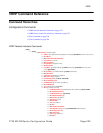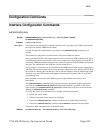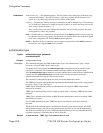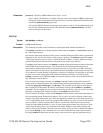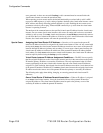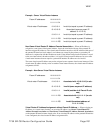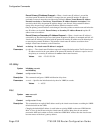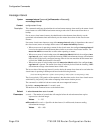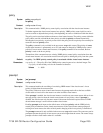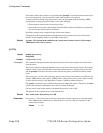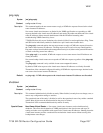Configuration Commands
Page 230 7750 SR OS Router Configuration Guide
error generated. At least one successful backup ip-addr command must be executed before the
virtual router instance can enter the operational state.
When operating as (non-owner) master, the default functionality associated with ip-addr is ARP
response to ARP requests to ip-addr, routing of packets destined to the virtual router instance source
MAC address and silently discarding packets destined to ip-addr. Enabling the non-owner-access
parameters selectively allows ping, Telnet and SSH connectivity to ip-addr when the virtual router
instance is operating as master.
The no form of the command removes the specified virtual router IP address from the virtual router
instance. For non-owner virtual router instances, this causes all routing and local access associated
with the ip-addr to cease. For owner virtual router instances, the no backup command only removes
ip-addr from the list of advertised IP addresses. If the last ip-addr is removed from the virtual router
instance, the virtual router instance will enter the operationally down state
Special Cases Assigning the Virtual Router ID IP Address — Once the vrid is created on the parent IP
interface, IP addresses need to be assigned to the virtual router instance. If the vrid was created with
the keyword owner, the virtual router instance IP addresses must have one or more of the parent IP
interface defined IP addresses (primary and secondary). For non-owner virtual router instances, the
virtual router IP addresses each must be within one of the parental IP interface IP address defined
local subnets. For both owner and non-owner virtual router instances, the virtual router IP addresses
must be explicitly defined using the backup ip-addr command.
Virtual Router Instance IP Address Assignment Conditions — The RFC does not specify
that the assigned IP addresses to the virtual router instance must be in the same subnet as the parent
IP interface primary IP address or secondary IP addresses. The only requirement is that all virtual
routers participating in the same virtual router instance have the same virtual router IP addresses
assigned. To avoid confusion, the assigned virtual router IP addresses must be in a local subnet of one
of the parent IP interfaces IP addresses. For owner virtual router instances the assigned virtual router
IP address must be the same as one of the parental IP interface primary or secondary IP addresses.
The following rules apply when adding, changing, or removing parental and virtual router IP
addresses:
Owner Virtual Router IP Address Parental Association — When an IP address is assigned
to an owner virtual router instance, it must be associated with one of the parental IP interface-
assigned IP addresses. The virtual router IP address must be equal to the primary or one of the
secondary IP addresses within the parental IP interface.




